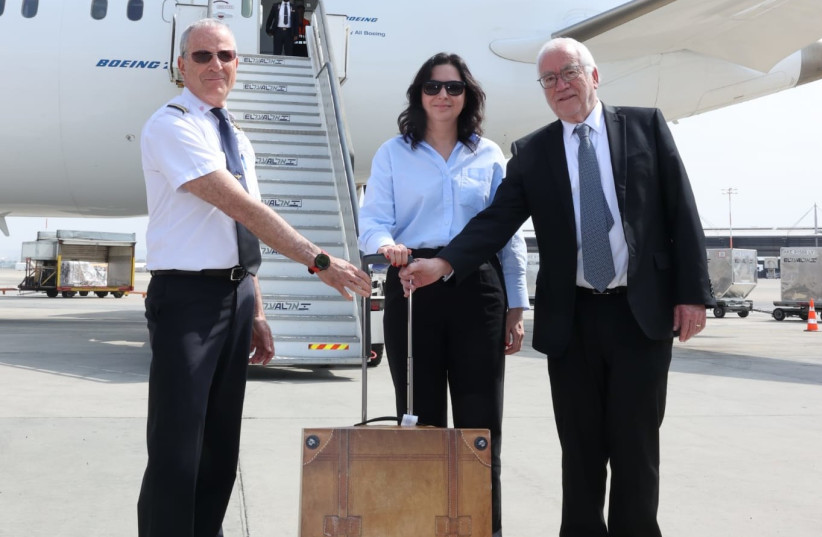The Codex Sassoon, the oldest complete copy of the Hebrew Bible dating back over 1,000 years, arrived home in Israel on Thursday after a world tour following its auction at Sotheby's in May.
The codex will be shown in a permanent display at ANU - The Museum of the Jewish People in Tel Aviv.
The ancient manuscript flew on an El Al passenger flight, although it flew in a seat more prestigious than first class: The cockpit. This was deemed the safest place for it on the plane. Upon landing, Captain Amos Aldaag removed the codex from its secure safe in the cockpit and carried it out to a warm reception on the tarmac.
What exactly is a codex and why is it special?
A codex, in the context of ancient texts, is a book or manuscript that is copied and bound with text appearing on both sides of the page the way a modern book is printed.
Before codices became the norm in publication, the Hebrew Bible was copied onto scrolls. The oldest of these, the Dead Sea Scrolls, are located in Jerusalem.

However, the Dead Sea Scrolls and texts like them do not divide the Bible into chapters and contain no punctuation or indication of how the words should be read aloud. The Masoretic notes, the marks found in modern copies of the Bible indicating how to pronounce and chant the text, did not begin appearing in copies of the Bible until the 10th century CE. The Codex Sassoon is the oldest complete manuscript of the Hebrew Bible that comes complete with the Masoretic notes.
The return of the codex to Israel
Ambassador Alfred Moses, chair of ANU’s honorary board and the donor of Codex Sassoon to the museum stated upon its return to the State of Israel:
“The Hebrew Bible is the most influential book in history and constitutes the bedrock of Western civilization. I rejoice in knowing that it belongs to the Jewish People. It was my mission, realizing the historic significance of Codex Sassoon, to see that it resides in a place with global access to all people. In my heart and mind that place was the land of Israel, the cradle of Judaism, where the Hebrew Bible originated.
"In Israel at ANU, it will be preserved for generations to come as the centerpiece and crown, Keter, of the entire and extensive display and presence of the Jewish story.”
The codex is named after its most well-known owner of the modern era, David Solomon Sassoon (1880-1942). It was part of an expansive collection and highly prized by the owner. Over the decades, it changed hands and eventually came to Sotheby's auction house by way of collector Ya'akov Safra.
The ANU Museum will be permanently displaying the codex in Tel Aviv starting on October 11, 2023.
